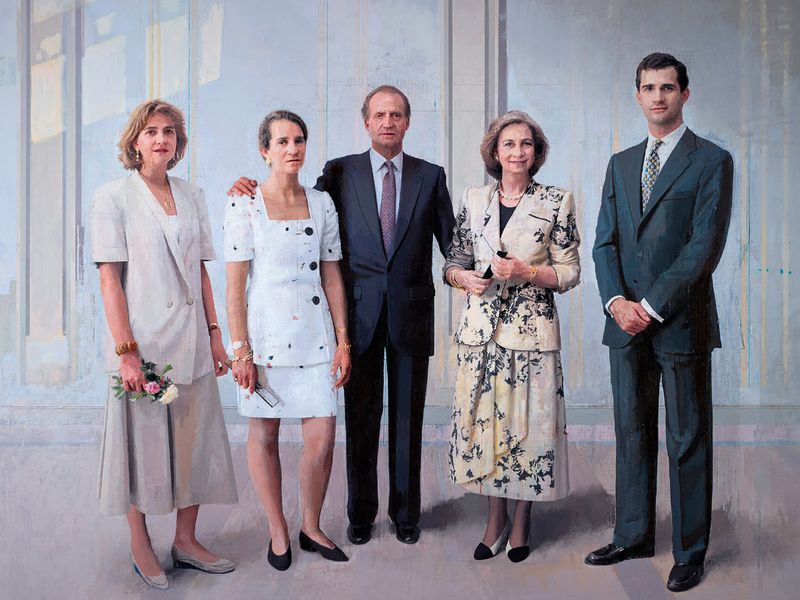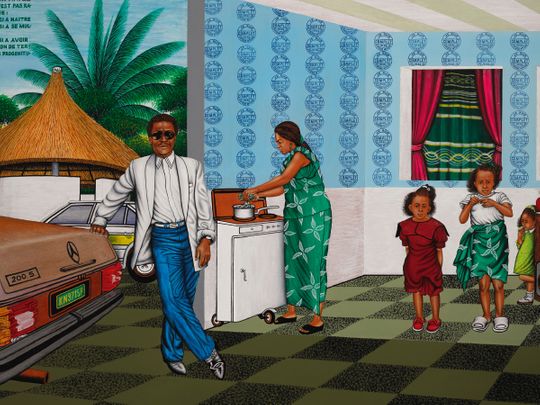
What a more common theme in painting throughout the history of art than that of family relationships? For instance the obvious mother-child bond, something experienced by practically every human on earth, something everyone can relate to. Not to mention the universal doubt that plagues every father when a child is born: is it really mine? Timeless concern, worry, joy and love.
A festival of abundance
There is also gravity to be found, for example in Louis Le Nain's Peasant Family in an Interior (1642), a magnificent emblematic bas-relief depicting nine peasants. It feels as if we have interrupted them, as if time has stood still.
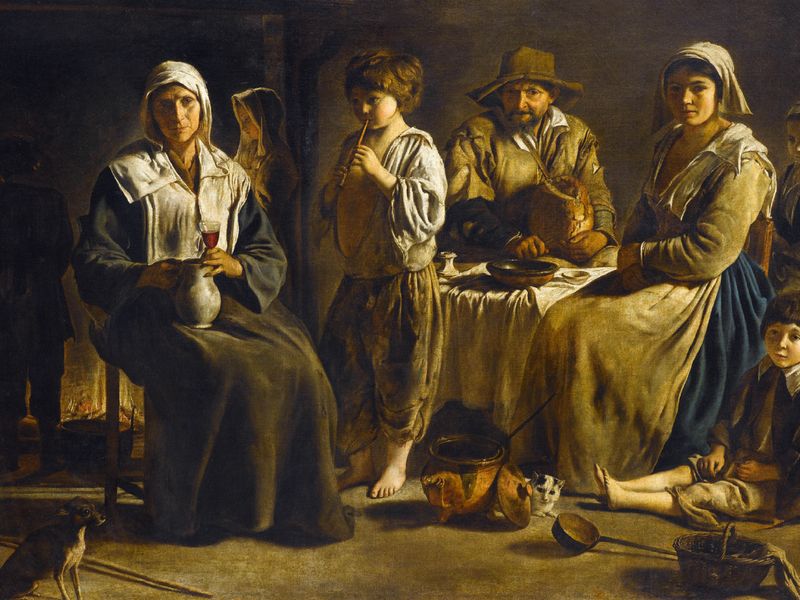
These peasants would be the first to enter the Kingdom of God, and there is no doubt that the real poverty, the muted colours, the faces with such depth, touch on the aspects both of what it means to be human and of the Christian mystery. What is the crystal glass filled with ruby-red liquid doing in a run-down cottage? What are they eating apart from the bread which has just been sliced by the head of the family? We are in fact subtly submerged in the atmosphere of the Eucharist. A theological exaggeration? Compare this painting with The Happy Family (1668) by Jan Steen.
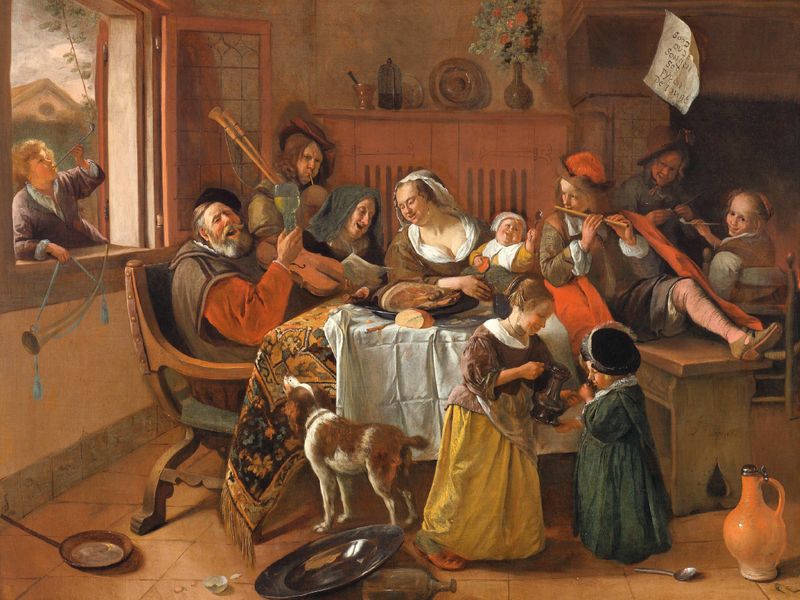
As André Malraux said: “Flanders did not come up with the still life imagery of a fish on a dish, but it did end its reign as the food of the apostles.” In his sensual and somewhat frenzied composition, Jan Steen departs from the integral moral pretext of the painting: “As the old man sings, the boy plays his flute”, to celebrate the festival of abundance of the Dutch bourgeoisie.
There is no moral order or religious story here. Instead, it is a kind of freedom which is ironically anguishing that the young Edgar Degas used as his subject. What is there to tell? He found the first major material for his career in his aunt's family, who invited him for a long stay at their home in Florence. Back in Paris and based on his drawings, within nine years Degas would produce one of his greatest portraits, that of The Bellelli Family (1858-1867), unsuccessfully exhibited at the Salon de Paris in 1867. The cumbersome painting was hidden away until his death, like a dreadful family secret. This painting reflects the marital discord so evidently taking pace. Laure Bellelli appears to be somewhere else, her expression somehow vacant, pensive, her boor of a husband barely deigning to turn his head, whilst the two daughters are a study in contrasts, appearing to call on the spectator to bear witness, with one somehow pretending, whilst the other revealing her boredom at being asked to pose.
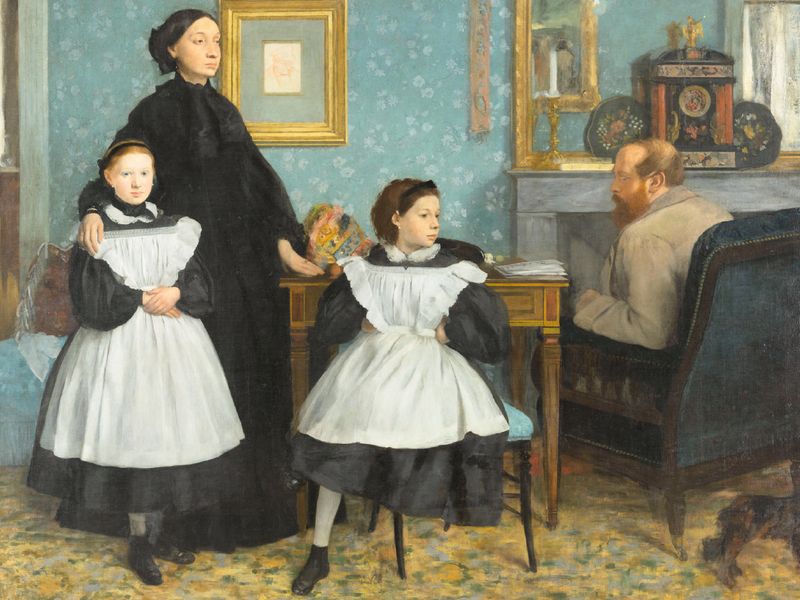
A successful life
Chéri Samba, a painter from the Democratic Republic of Congo, however, paints no pretence in A Successful Life (1995). Between a real and false naivety, this internationally renowned painter symbolises African bling bling, between a Mercedes, a woman stands at the oven and her numerous children in typical heartfelt poses. It seems that Lucian Freud had more trouble with the baby in The Pearce Family (1998), in fact, he totally failed. The young man in the foreground, with a nonchalant air, wearing a fan T-shirt, an iconographic invention of carefree adolescence, is much more of a success. Freud is judge and jury as well as painter of his small son, his mother Rose Pearce being Freud's daughter. Rumoured to have fathered as many as forty children and absolutely egotistical about his work, having to pose to see their father, we can only imagine the rather pathetic effort that Rose had to ask her family to make.
Jonathan Wateridge has understood the lesson of artificiality gifted by photographers such as Jeff Wall and Philip-Lorca diCorcia, and for his major compositions, using pure settings – with backdrops chosen by the “actors” – which he spends as much time constructing as he does painting. Night Kitchen (2010) is a huge success and is the work of a very promising artist. With amazing treatment of the objects of modern life, suggestive of a film by Steven Spielberg, in which an incompetent father asks his ex-wife how to give the children some-thing else to eat other than pizza.
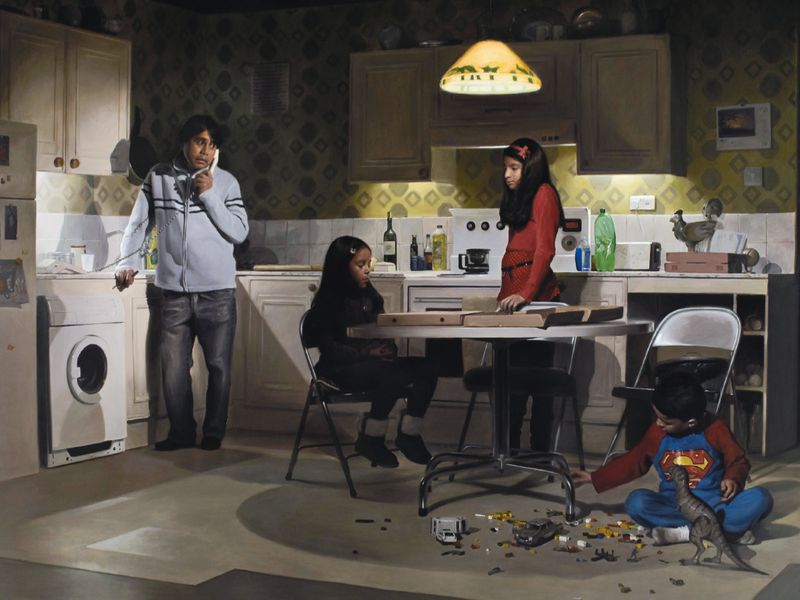
Velasquez without the talent
More anecdotal, Antonio López García painted the Spanish Royal family (La Familia de Juan Carlos I – 2014), as did Goya or Diego Vélasquez, but minus the talent. King Juan Carlos, his wife, his two daughters and his son Felipe posed for the photo in 1994. The canvas, which took two decades to complete, shows a dreadful reflection of the family in 2014. In the mean-time, Juan Carlos had had to abdicate the throne following an elephant hunting scandal in Botswana, and one of his daughters was involved in a financial embezzlement scandal. Contemporary turmoil and unrest are perhaps no longer the main reason that paintings take so long to finish…
